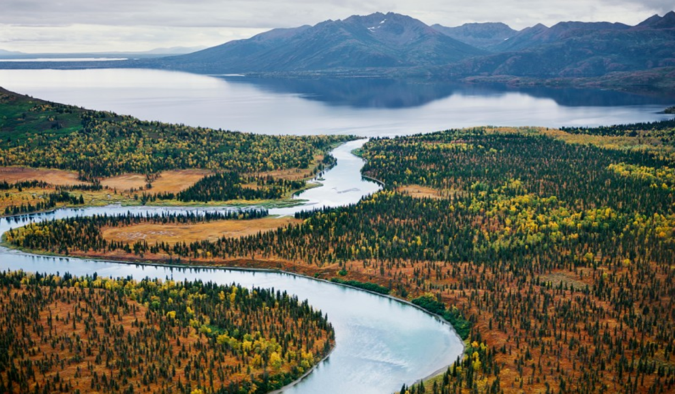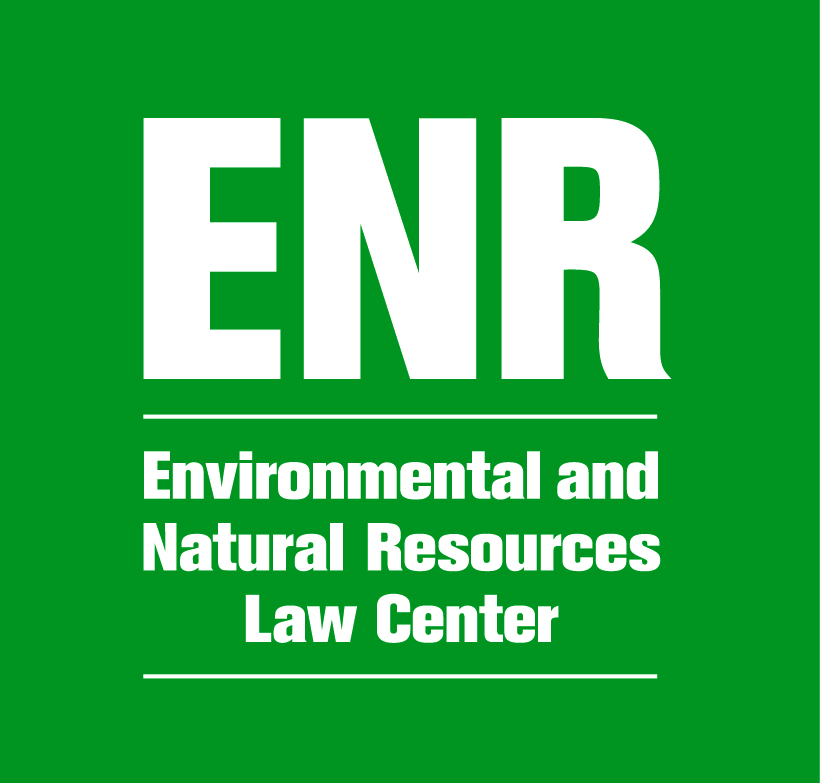By: Sara Brennan
Fish- or industry- first? That is the question facing all those interested in the outcome of the newly refreshed permitting process for the Pebble Mine Project near Alaska’s Bristol Bay. Changes are always expected with a new administration, but the change-over in the Environmental Protection Agency (EPA) has revitalized a 30-year fight over whether to allow the construction of a mine located in one of the most valuable watersheds in the United States. See Image 1.

While we know the process has been triggered again, where did the process really begin? The late 1980s was a turning point for the thriving Bristol Bay watershed when one, large gold and copper deposit was found in not one, but two locations in the watershed.[1] Not only was the fishing industry booming, but 1988 marked the first discovery of the Pebble West deposit.[2] Pebble West, later combined with the 2005 discovery of the Pebble East deposit resulted in a race to get the infamous Pebble Mine up and in operation.[3]
Prior to the discovery of the rich gold and copper deposits in the region, it is no secret that Bristol Bay already provides an invaluable natural and financial resource—wild sockeye salmon. More specifically, the region’s annual run of sockeye

salmon—with numbers regularly reaching nearly 40 million—provide approximately 46% of the world’s supply.[4] The recreational and commercial fishing industry in the region provides nearly 14,000 jobs and overall pulls in nearly $1.5 billion annually to the state.[5]
During President Barack Obama’s second term, he set out to protect the Bristol Bay watershed: “[o]ne of America’s greatest natural resources and a massive economic engine, not only for Alaska but for America.”[6] Prompting President Obama’s announcement was the culmination of a multi-year watershed assessment, conducted by the EPA, which reaffirmed the unique and delicate nature of Bristol Bay, as part of the Clean Water Act (CWA) §404(c) permitting process.[7]
The §404(c) permit places restrictions on disposal sites—the permit authorizes the EPA to prohibit, restrict, or deny the discharge of dredged or fill materials whenever it determines that use of such sites for disposal would have an unacceptable adverse impact on the resources of the particular region.[8] The dredge and fill materials as a result of the mine operation is estimated to potentially reach 10 billion tons depending on the length of mining operations, speculated to be 20-25 years, if not longer, based on what is found at the sites.[9]
As of November 2016, prior to the presidency of Donald Trump, a U.S. District Court judge in Alaska issued a preliminary injunction that temporarily halted the EPA’s work related to the Pebble Mine and efforts to further protect Bristol Bay.[10] Prior to this decision, the EPA had made great strides—through the multi-year study and proposed restrictions on the dredge and fill allowed in the region—to protect Bristol Bay. Effectively, the ruling granted Pebble’s request to block the EPA from finalizing the restrictions on operations at the mine site.
The transition from the Obama to the Trump Administration brought new leadership to the EPA—director Scott Pruitt. Since this change, the EPA has set out to evaluate the process that must be followed in the application and review processes for such permits as those required for the operation of the Pebble Mine: “[w]e are committed to due process and the rule of law, and regulations that are ‘regular.’ We understand how much the community cares about this issue . . . the agreement . . . will provide Pebble a fair process . . .”[11]
Not only does this new approach by the EPA alter Pebble’s chances at obtaining the necessary permits through a newly re-opened process, but Pebble now has a new

CEO for the job—Tom Collier, former chief of staff for Bruce Babbitt at the Department of the Interior during the Clinton Administration.[12] If Collier is successful in securing the necessary §404 permit he will receive a bonus of up to $12.5 million.[13] Spelling out more troubles for those opposing the mine, on May 11, 2017 the EPA and Pebble Limited Partnership reached a settlement agreement relating to the litigation from 2014 relating to EPA’s work to effectively halt the mine’s operation.[14]
Basically, the 2017 settlement outlined that Pebble would have an opportunity to apply for the §404 permit before the EPA may move forward with the CWA process to specify limits on the disposal of certain material in connection with the mine; the EPA agreed to commence a process to begin the withdrawal of the current pending proposed determination and will not move forward with the next steps until four years after the settlement or until the Army Corps of Engineers issues a final Environmental Impact Statement (EIS); in return, Pebble will drop the lawsuits and fee requests from the EPA and agree to not file any more Freedom of Information Act (FOIA) requests.[15] As a result of this settlement, in July 2017, the EPA began the process to seek comment on whether to withdraw the Proposed Determination (that would place restrictions on the dredge and fill material from the potential mining operations).[16] The comment period ended on October 17th, but the process has just begun.[17]
Earlier in the week leading up to the end of the comment period, on October 12th Collier announced a plan for a smaller mine and one he claims addresses the environmental criticisms about the project: “we are walking away from 15% of the gold.”[18] That being said, Northern Dynasty (another project partner) CEO Ron Thiessen told reporters that this “is the best way to ‘start’ the project.”[19] Specifically, the smaller mine would mean that the tailing storage facility—the location used to store the waste from the mining operations—would only be located on one drainage system in Bristol Bay, rather than multiple systems that were the source of much of the concern over the project.[20]

While the results of the comment period will be a telling sign of the views of those in support and opposition of the project, it is clear that the Pebble Mine is back on the docket and parties on both sides of the project will need to be active in the process moving forward. If the Pebble Mine is successful and receives the “go-ahead” to continue with the permitting process the timeline will be something like three to four years for the permitting process, four to five years for the project’s construction, followed finally by anywhere from 20 to 25 years of operation.[21]
[1] Permit/Development Timeline, Pebble Watch (May 2017), http://pebblewatch.com/projects/history-timeline/.
[2] Id.
[3] Id.
[4] Nicole Greenfield, Crushing Alaska’s Pebble Mine, Natural Resources Defense Council (Jun. 2, 2016), http://pebblewatch.com/wp-content/uploads/2017/06/pebble-timelineMay24_2017.pdf.
[5] Id.
[6] President Obama Protects Alaska’s Bristol Bay From Future Oil and Gas Drilling, The White House: Office of the Press Secretary (Dec. 16, 2014), https://obamawhitehouse.archives.gov/the-press-office/2014/12/16/president-obama-protects-alaska-s-bristol-bay-future-oil-and-gas-drillin.
[7] Bristol Bay Assessment—Final Report (2014), Bristol Bay: U.S. Environmental Protection Agency (Jan. 2014), https://www.epa.gov/bristolbay/bristol-bay-assessment-final-report-2014.
[8] Clean Water Act, 33 U.S.C. §1344.
[9] Nicole Greenfield, Crushing Alaska’s Pebble Mine, Natural Resources Defense Council (Jun. 2, 2016), https://www.nrdc.org/stories/crushing-alaskas-pebble-mine.
[10] Lisa Demer, Federal Judge sides with Pebble to halt EPA mine action for now, Alaska Dispatch News (Sept. 28, 2016), https://www.adn.com/environment/article/federal-judge-sides-pebble-halt-epa-now/2014/11/25/.
[11] 2017 Settlement Agreement Between EPA and Pebble Limited Partnership, Bristol Bay: U.S. Environmental Protection Agency, https://www.epa.gov/bristolbay/2017-settlement-agreement-between-epa-and-pebble-limited-partnership.
[12] Tim Sohn, Bristol Bay’s Pebble Mine is Back in Play, Outside Magazine Online (Oct. 16, 2017), https://www.outsideonline.com/2252326/bristol-bays-pebble-mine-back-play.
[13] Id.
[14] 2017 Settlement Agreement Between EPA and Pebble Limited Partnership, Bristol Bay: U.S. Environmental Protection Agency, https://www.epa.gov/bristolbay/2017-settlement-agreement-between-epa-and-pebble-limited-partnership.
[15] Id.
[16] Suzanne Skadowski, EPA proposes to withdraw Clean Water Act restrictions for Pebble Mine in Alaska’s Bristol Bay watershed: 90-day public comment period, News Releases from Region 10 U.S. Environmental Protection Agency (Jul. 7, 2017), https://www.epa.gov/newsreleases/epa-proposes-withdraw-clean-water-act-restrictions-pebble-mine-alaskas-bristol-bay.
[17] Id.
[18] Alex Demarban, Pebble unveils smaller mine plan, Alaska, The Bristol Bay Times (Oct. 13th 2017), http://www.thebristolbaytimes.com/article/1741pebble_unveils_smaller_mine_plan.
[19] Id.
[20] Id.
[21] Timeline of Events, Pebble Watch (Jun. 2017), http://pebblewatch.com/wp-content/uploads/2017/06/NewPWTimeline_2017sm.pdf.
